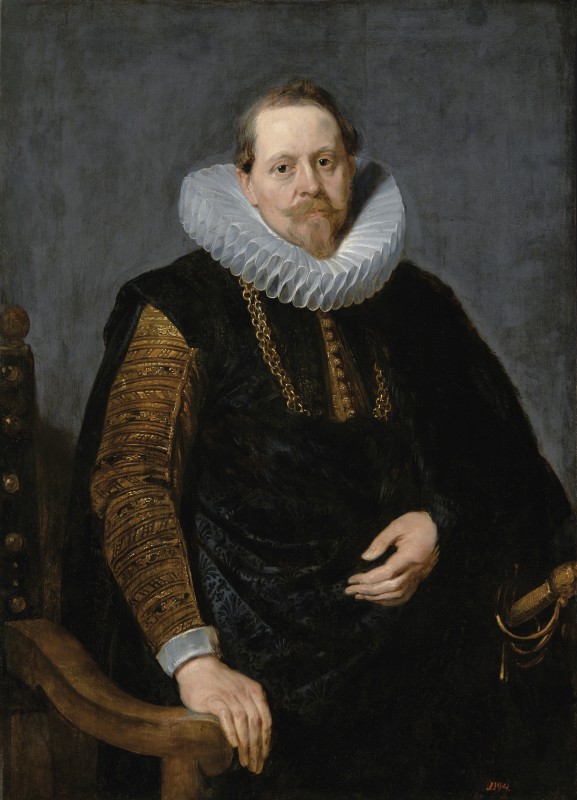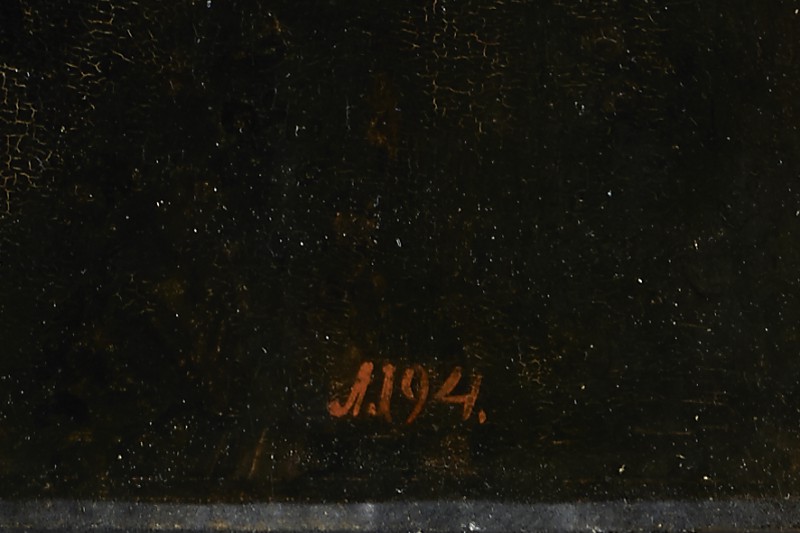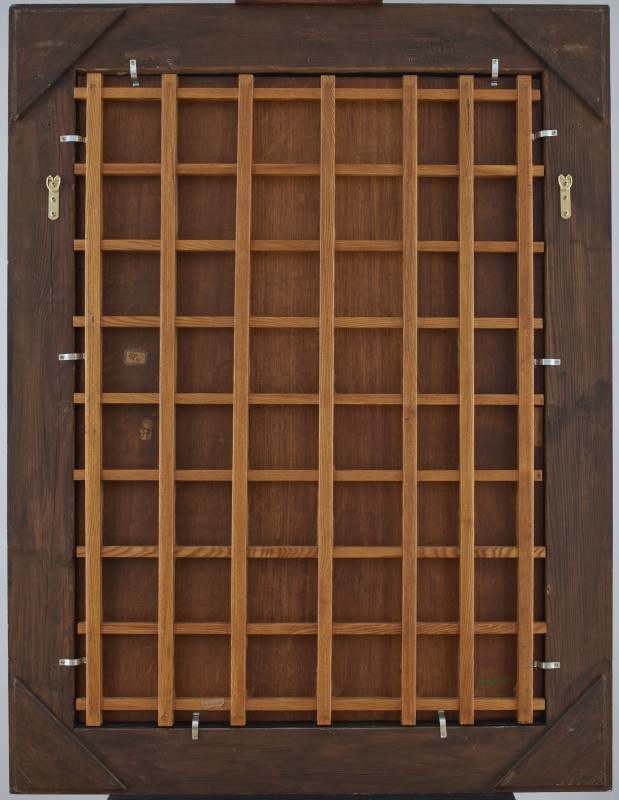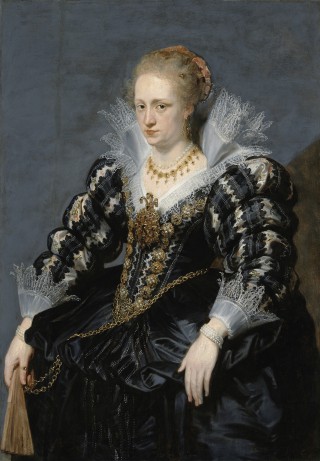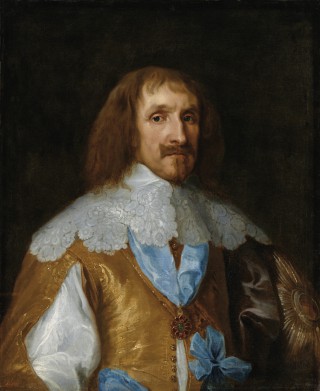Jean-Charles de Cordes
- Date
- c 1618-1622
- Object type
- painting
- Technique
- oil
- Material
- wood
- Dimensions
- 104,9 x 75,5 cm
- Acquisition date
- 1769
- Location
- The Palace on the Isle - Picture Gallery, ground floor
- Marks and inscriptions
- red number 1194 of the Stanisław August collection, bottom right
- Place of Origin
- Antwerpia (Belgium)
- Owner
- The Royal Łazienki
- Museum number
- ŁKr 840
Jean-Charles (Jan Karel) de Cordes (1577–1641), Seigneur de Wichelen Cescamp, came from a well-known noble family of Antwerp. His portrait is a pendant to the portrait of his wife, Jacqueline van Caestre (see cat. no. 43), whom he married in 1617. It shows the sitter knee-length, in a gold-black costume with a sabre at his side. ... . It was Stanisław Iskierski (S. Iskierski, Katalog galerii obrazów Pałacu w Łazienkach w Warszawie, Warszawa 1931, no. 150) who first noticed the connection between the Łazienki portraits and a pair of paintings in the Musées Royaux des Beaux-Arts de Belgique in Brussels ... . He considered the Łazienki paintings to be 18th-century copies of the Brussels portraits. ... .
The Brussels portrait of Jean-Charles de Cordes ... , like its pendant, shows a seated model, half-length. Portraits painted c. 1618 ... , from the 18th century onwards have been attributed alternatively to Rubens ... , or to the young van Dyck, employed at that time in the master’s studio. ...
... The prevailing opinion was that the Brussels portraits had originally been knee-length, like those in the Łazienki, but had been cut at the lower part. ...
However, as demonstrated by the latest technological research ... , the Brussels originals had not been cut. According to Nora de Poorter (in: A Genius at Work. The Works of Peter Paul Rubens in the Royal Museums of Fine Arts of Belgium Reconsidered, exh. cat., J. van der Auvera, S. van Sprang, et al., Brussels, Musées royaux des Beaux-Arts de Belgique, 2007, pp. 140–41) there must, therefore, have been yet another 17th-century pair of portraits of de Cordes and his wife, showing them three-quarter length, which would have been the prototypes both for the Brussels replicas and the Łazienki copies. The question of whether these unknown prototypes were the work of Rubens, or his outstanding assistant, must remain open. Scholars do agree that such an important client as de Cordes would undoubtedly have commissioned portraits of him and his wife from Rubens himself, with whom he had personal contact anyway ... . However, according to de Poorter (as above), the paintings could have been a joint work, or could even have been painted by van Dyck with the consent of the master, who put his name to it. ... . [See D. Juszczak, H. Małachowicz, The Stanisław August Collection of Paintings at the Royal Łazienki. Catalogue, Royal Łazienki Museum, Warsaw 2016, no. 42, pp. 177–179.]
